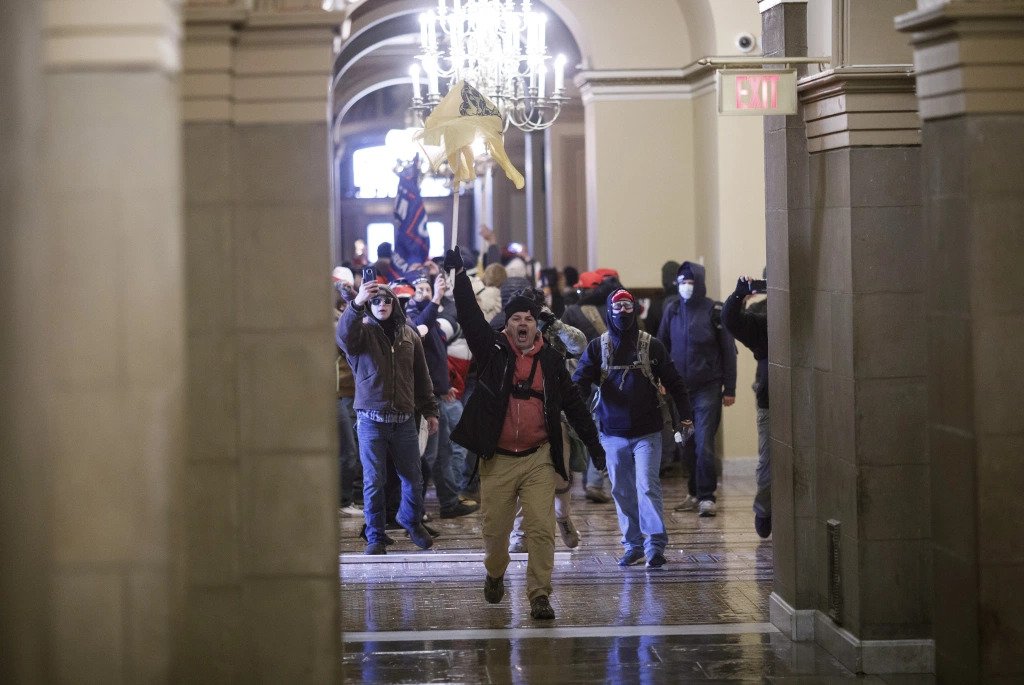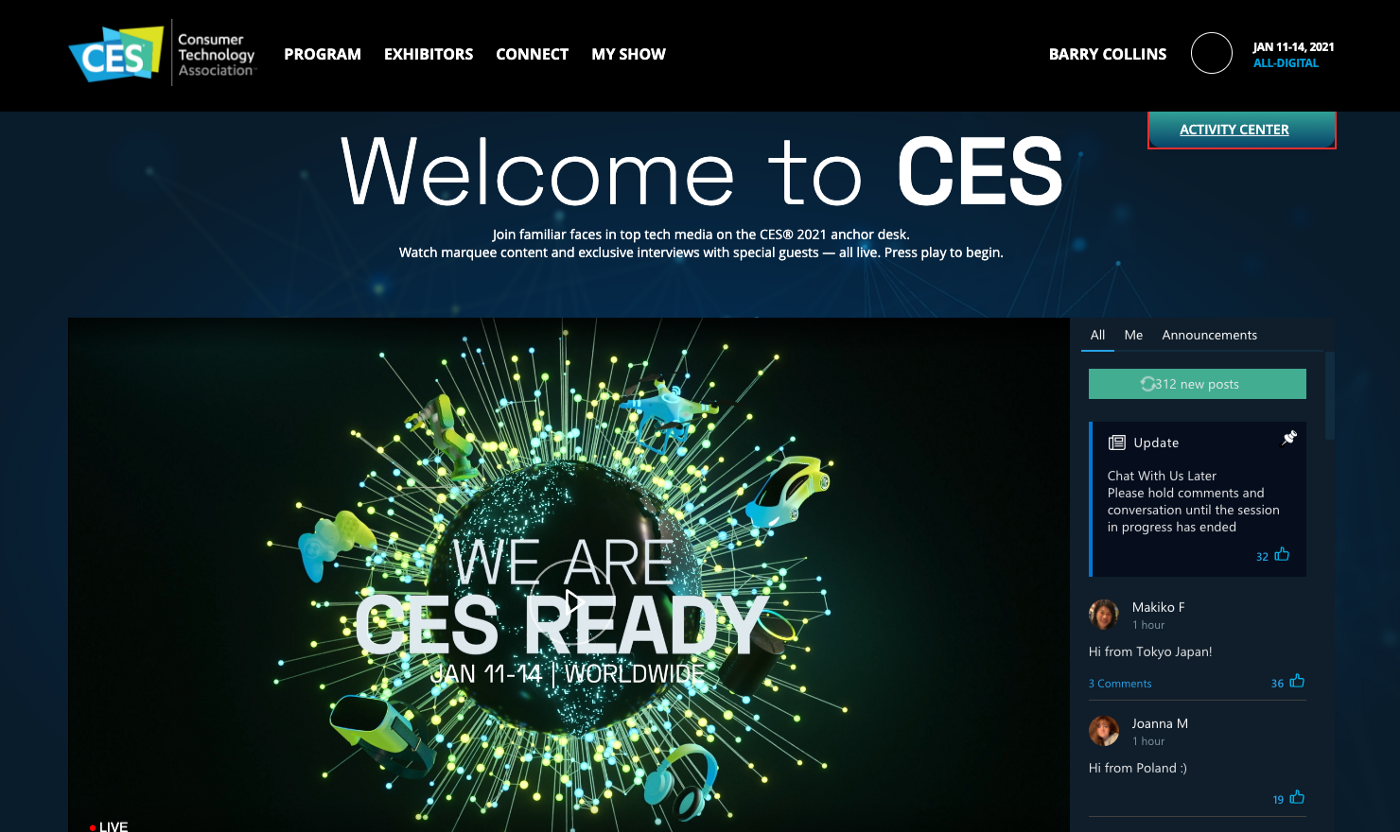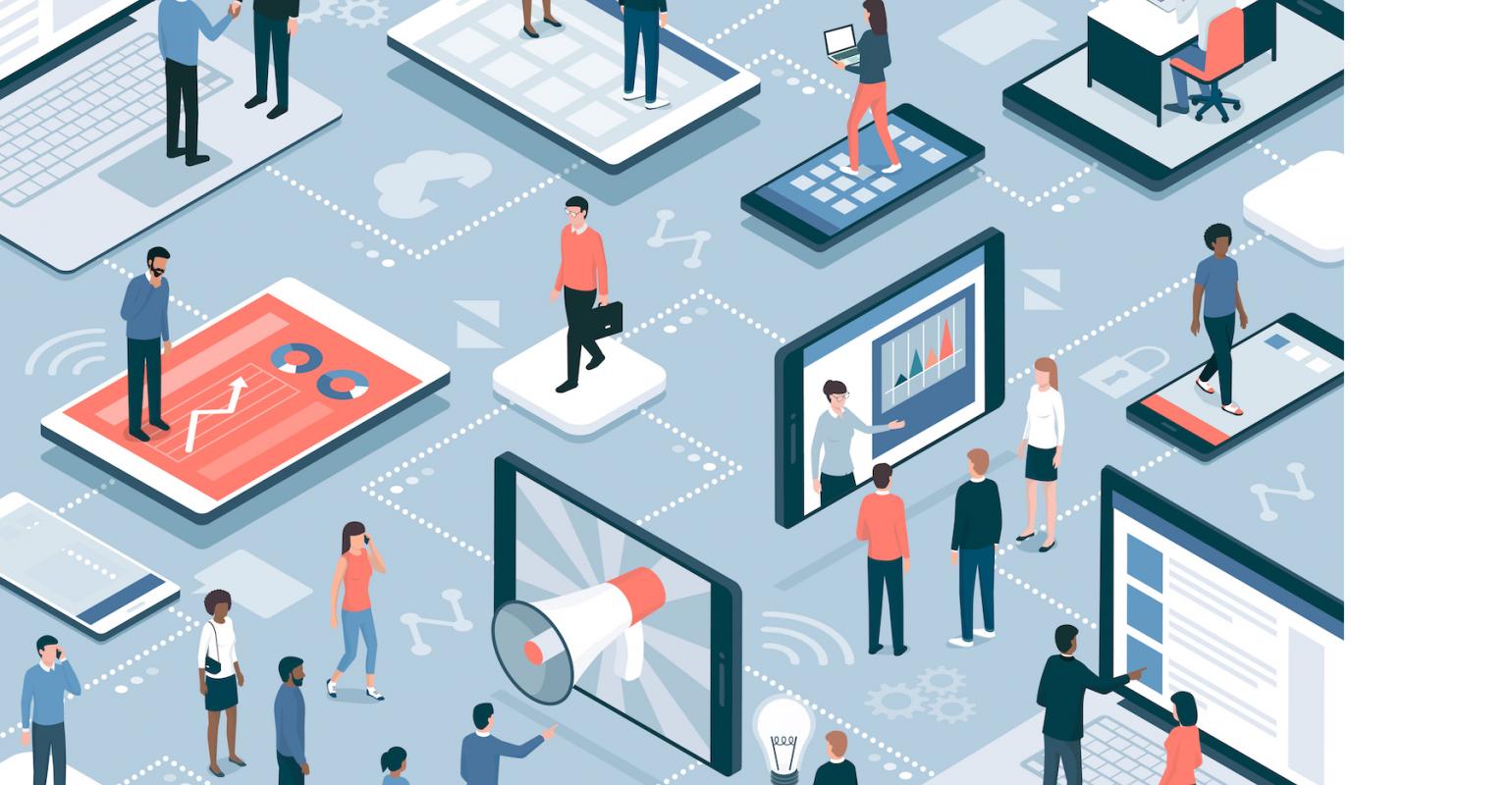And why some technology conferences will never work virtually
15 January 2021 (Chania, Crete) – If you wanted to see two completely divergent narratives around tech, this week was the time to do it. On one hand, we had CES, a wan, digital version of the giant consumer technology trade show held every January. And on the other hand, we saw how social media, monolithic technology platforms such as AWS, and social algorithms were harnessed to fuel an insurrection on the U.S. Capitol.
Thanks to technology (namely smartphones and cloud services), citizens of the U.S. and of the world were able to watch everything unfold live and debate every aspect of the insurrection on the same social media platforms that were accused of enabling it. Also thanks to technology (specifically facial recognition software and digital forensics), law enforcement was able to track down some of those involved and arrest them. In the meantime, as the tech reckoning was taking place in the real world, the digital version of the trade show was showing off futuristic robots, curved screens, and $3,000 dog doors.
And yet, even at CES a reckoning was taking place. Microsoft President Brad Smith kicked things off with a keynote focused on the role we want technology to play in the world. He addressed its gigantic consumption of energy (it takes the same amount of energy to operate a data center for a year as it does to power 8,000 homes, for example) and talked about Microsoft’s efforts to mitigate the effects of that consumption by moving from fossil fuels to renewables. He then talked about the need for technologists to think about what technology can do and how it might be used against others. Smith also called for guardrails on the tech industry around artificial intelligence, noting how technologies like facial recognition can be used for both good and bad. He also brought up the possible repercussions of algorithmic bias.
It was an incredibly surprising speech for a technology event. Technology has been associated with optimism and exceptionalism for so long that for it to even recognize that it has both beneficial and detrimental effects on both individual people and the world at large felt like introspection.
It was not, of course. And yet the spectacle of an entire industry waking up to the implications of what it builds was everywhere at the show. Related was the idea that if technology really is now part of everything, then what responsibilities does the tech world need to consider?
We saw the CEOs of Best Buy and Walmart address the killing of George Floyd, which sparked the Black Lives Matter protests of the summer. And thanks to the pandemic we saw hundreds of ways companies are trying to use technology to address the age-old human enemy – disease. And we saw several companies and executives address sustainability in ways that were more than just a veneer over a product.
Executives from Bosch, for example, showed off a highly produced marketing video featuring a little Black girl with a British accent rapping about climate change. But they also laid out a plan for making a portion of Bosch’s supply chain carbon-neutral by 2030. And Schneider Electric spent time discussing its vision for a sustainable home, although it was mostly focused on electrification (this makes sense given Schneider Electric’s product lines).
My media team followed the entire event. I grabbed a bit of it each day. But it was … bizarre. We’re talking about an entire industry of people who have long let their optimism keep them from self-reflection realizing that tech isn’t the panacea they thought. And not a moment too soon, because with the internet of things, technology is being called to solve ever-more-complex problems. It’s also why the SoarWinds hack was much, much, much more than just a “cyber security event”. I will get into that next week when we launch a 5-part series on SolarWinds, bringing in 20+ people. Yes, it takes a village.
And one thing brought home this year: some tech events will never be able to do virtual without losing their sense of self. Without wishing to sound crude, COVID-19 might be the best thing to happen to CES because this year’s virtual conference makes you appreciate just how valuable the real thing is. The CES organizers did a reasonable job of hosting a virtual conference, but was nowhere near as useful as the Las Vegas jaunt.
NOTE: Virtual CES was not a total blowout. The press events worked well. Instead of being thrust into the usual cattle pen with journalists left to scrum it out with exhibitors, the organizers held a virtual event instead, where you clicked on the exhibitor’s name, were given a short video of their new products and could then dive into Zoom sessions with their staff if you wanted more details.
And the following comments also apply to the Mobile World Congress (MWC) in Barcelona. It completely cancelled the 2020 event and has (optimistically) scheduled June 2021 for its next iteration. But vendors are champing at the bit to get a place.
As a media journalist, I (like many of my colleagues) feel we are short-changing our subscriber lists. While I do attend in order to catch-up with my TMT contact list and do a few bespoke videos for long-time clients, I really go to get a better look at the technology and report back to my TMT base. But if I can’t touch the products, get a feel for a mobile phone or laptop keyboard, wear a pair of new-fangled headphones or see the new AI-controlled toilet – well, why attend? I’m at the other end of a Zoom call, web chat, whatever relying on … intuition? guesswork? There is no “experience”.
I feel like I’m missing good products, too. Every CES-bound and MWC-bound journalist will know the pain of waking each morning to find 500 more press releases in your inbox. Sorting the wheat from the piles of chaff is near impossible. When I am in Barcelona I have a 5-person team. We have a large number of pre-booked appointments but basically we fan out and wander the halls trying to find the gems. And with 7 halls, stretched over 6 football pitches long and 4 football pitches wide, it’s a lot of geography to cover.
The fun part in Barcelona? Hall 8A. Hundreds of students and startups from all over the world, super-pumped about tech, their product, their vision. Most with prototypes that will hit the landfill, never making it to commercial product. But the innovation, the brilliance, the ambition. Things that are not just another sodding slab of glass. In 2019: a chess board that moved its own pieces.
And so this year, at CES, a virtual event, so what if you have something more interesting. How do you get noticed at an event like that? If you’re just a logo on a screen, how are you going to attract a journalist’s attention? A potential customer’s attention. We dived into a couple of Zooms with the smaller exhibitors … and they were almost shocked to see us. One said “you have been our only visitor all day”.
Plus, the “buzz factor”. Perhaps what’s hardest of all for a journalist at a virtual event like CES is that it makes it impossible to tell which products are generating a buzz. Same at MWC. When you can see hundreds of people crammed around a stand or a product on the show floor, you know there’s something worth investigating there.
NOTE: I saw it only once at a legal technology event we used to cover called LegalTech. It was a number of years ago on a Thursday, the last day of the event. Vendors were busy knocking down their booths, packing their stuff. Except at a company called Logikcull. They still had a large crowd of people trying to get more info. The only vendor still swamped with potential customers. I thought “Hmmm — they are one to watch”. I was right. They become a powerhouse in the e-discovery industry.
Because it’s not always Apple or Sony or HP or Chrysler or IBM or Samsung or another big name that has these seminal products, but the smaller guys. The people without large battalions of PRs or huge budgets, who will get your attention anyway. Several years ago at MWC I met up with a small Spanish company called Herta which developed the first scalable and customizable face recognition software. They would go on to win security contracts for the Golden Globe Awards, the Super Bowl, U.S. casinos etc. They would partner with Intel, Nvidia, Microsoft, etc. They would become a big media client of mine and we have produced multiple videos for them.
I do not do the conference circuit anymore (except for MWC, my first major event 14 years ago and one hard to let go). But I remember the regular CES and MWC and Frankfurt Book Fair. They are brutal, week-long slogs. 200,000+ attendees at each, jostling through the halls. I remember the pain of coordinating flights, packing our media kits, etc. Plus the sore feet, the queues, the 16-hour days, the traipsing from hall to hall, the queues, the scuffles to get a desk in the press room, the queues (did I mention the queues?) will kill you.
But when it’s safe to go again, call me. I’ll be there. In the queue.


